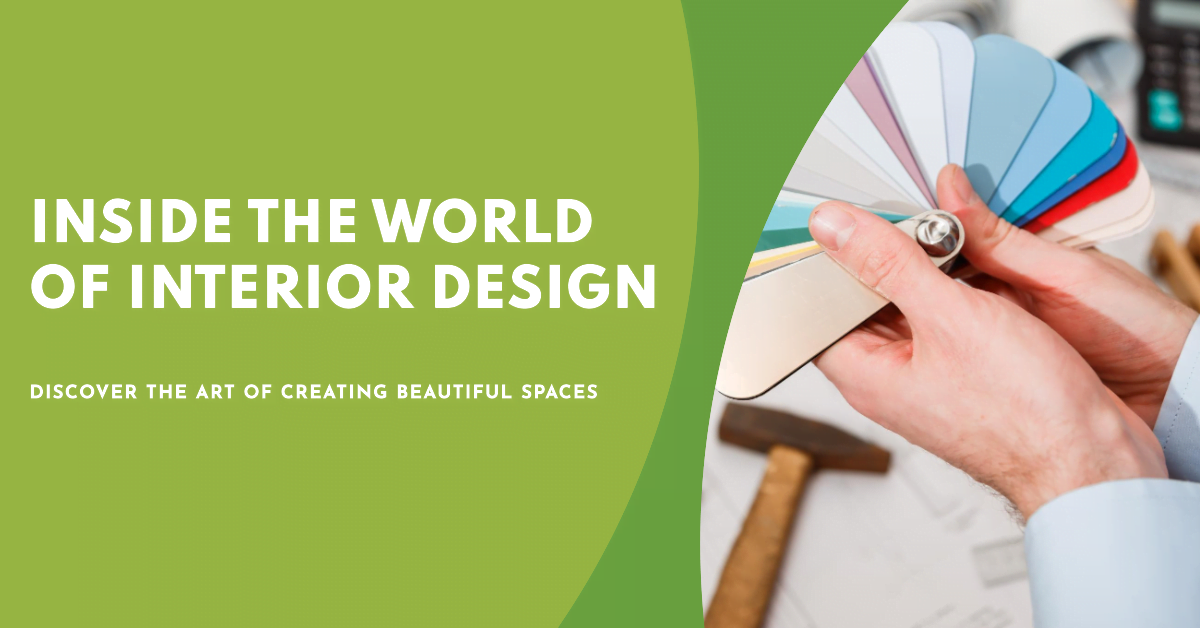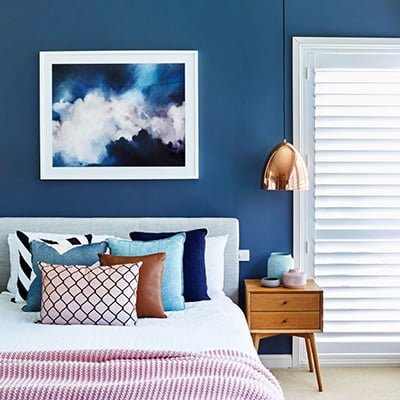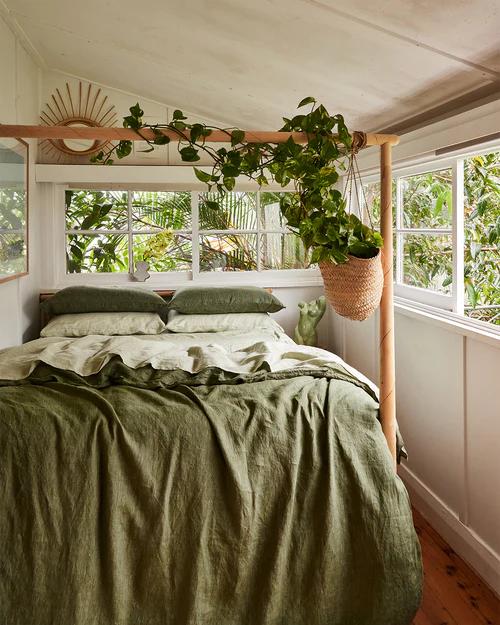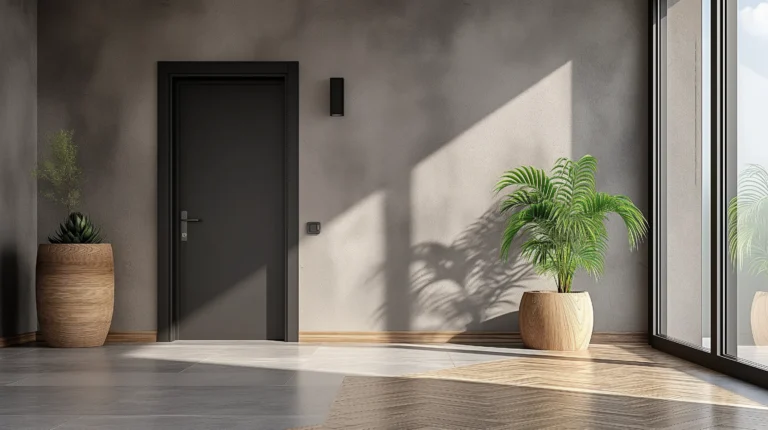In the heart of every well-curated home or office lies the vision of an unsung hero: The Interior Designer.
But what exactly is interior design, and why has it become such an integral part of our living and working spaces?

Definition of Interior Design and Its Importance
Interior design is more than just selecting the right shade of blue for a bedroom or finding the perfect sofa for a living room. It’s an art and science dedicated to enhancing the interior of a space to achieve a healthier and more aesthetically pleasing environment for its inhabitants.
Imagine walking into a room where every piece of furniture, every color on the wall, and every decorative item tells a story, evokes an emotion, or serves a purpose. That’s the magic of interior design.
It’s not just about home decor or furniture selection; it’s about creating spaces that resonate with the people who live or work in them.
Brief History of Interior Design
The history of interior design dates back thousands of years, with ancient civilizations like the Egyptians and Romans placing great emphasis on the aesthetics and functionality of their living spaces.
Over the centuries, as societies evolved and technologies advanced, so did the art of interior design.
From the opulent palaces of Renaissance Europe to the minimalist homes of modern-day Japan, every era and culture has contributed to the rich tapestry of design principles we see today.
What Is An Interior Designer
The interior designer, the maestro orchestrating this symphony of color schemes, textile choices, lighting solutions, and so much more.
An interior designer wears many hats—they are part visionary, part project manager, and part therapist.
They understand the nuances of space planning, room layout, and even the complexities of renovation and remodeling.
But above all, they bring to life the decorating ideas that transform a mere space into a reflection of its inhabitants’ personalities and desires.
What Does An Interior Designer Do
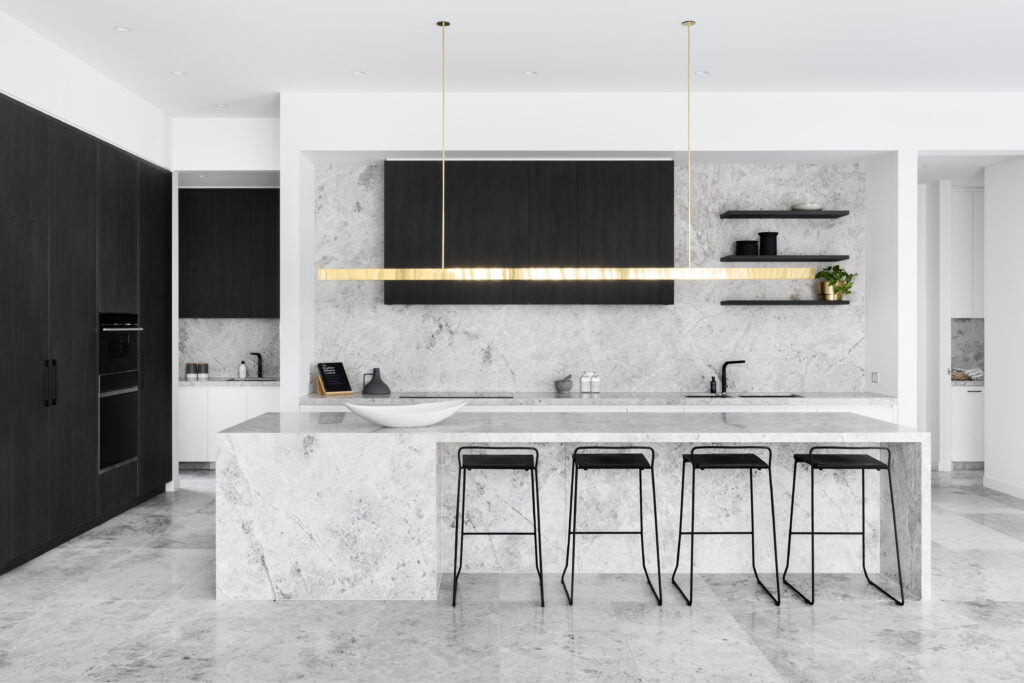
The realm of interior design is vast and varied, with each project presenting its unique set of challenges and rewards. At the core of every endeavor, however, lies the interior design process—a meticulous journey that transforms an idea into a tangible reality.
Residential vs. Commercial Interior Design
At a glance, one might think that designing a cozy home and a bustling office space are worlds apart. And in many ways, they are.
Residential design focuses on personal spaces, tailoring each room to the individual or family’s tastes and needs.
Commercial design, on the other hand, caters to businesses and public spaces, prioritizing functionality, brand identity, and the well-being of numerous occupants.
Yet, the underlying principles of design—balance, proportion, and harmony—remain consistent across both domains. If you want more information on the difference between Residential and Commercial Interior Designs check out this article.
Understanding Client Needs and Preferences
Before a single sketch is drawn or a fabric swatch is chosen, the designer embarks on a journey of discovery.
Through in-depth consultations, they unearth their client’s desires, aspirations, and even the unspoken emotions tied to a space. It’s a dance of questions and answers where the designer becomes part detective and part confidante.
Conducting Site Assessments and Measurements
With a clear vision in mind, the designer then steps into the physical realm of the project.
Armed with tape measures, laser levels, and an eye for detail, they assess the site, noting its strengths and challenges.
This phase is crucial, ensuring that the design elements align perfectly with the space’s dimensions and quirks.
Creating Custom Design Plans and Presentations
Now, the magic begins. Using a blend of technology and artistry, the designer crafts detailed plans, 3D renderings, and mood boards.
These presentations breathe life into the project, offering a glimpse into the future—a future filled with color, texture, and pattern.
Sourcing Materials, Furniture, and Accessories
The hunt is on! The designer scours the globe (or at least, numerous showrooms and catalogs) for the perfect materials and finishes. Whether it’s a bespoke piece of furniture, a vintage lamp, or sustainable materials that echo the call of nature, every item is chosen with care and precision.
Collaborating with Contractors and Suppliers
Interior design is a symphony, and the designer is the conductor. They collaborate with a host of professionals, from carpenters to electricians, ensuring that the design vision is executed flawlessly. It’s a dance of coordination where communication is key.
Managing Project Timelines and Budgets
Behind the scenes, the designer is also a savvy project manager. They juggle timelines, oversee budgets, and troubleshoot challenges—all while keeping their client’s best interests at heart.
Ensuring Safety and Building Codes Compliance
Last, but by no means least, the designer ensures that the space isn’t just beautiful but also safe. They navigate the maze of building codes, permits, and regulations, guaranteeing that the final result is both stunning and compliant.
Education and Training Requirements
Dreaming of a career where creativity meets functionality? Where every day present a canvas to paint your vision? Becoming an interior designer might be your calling.
But, like any esteemed profession, it requires a solid educational foundation and hands-on experience. Let’s explore the steps that can lead you to the doors of The Interior Design Institute, a renowned institution that promises to turn your dreams into reality.
Degree Programs in Interior Design
The first step to realizing your dream is enrolling in a comprehensive degree program. The Interior Design Institute offers an online Interior Design Course that not only fits into your schedule but also provides a robust curriculum.
With the guidance of leading interior designers and high-definition video content, you’ll be equipped with the skills and knowledge to make your mark in the design world.
Coursework and Skill Development
The course at The Interior Design Institute doesn’t just skim the surface. It dives deep into the principles of design, from visual weight to color theory. And it’s not just about theory; practical assignments challenge you, fostering skills in harmony, unity, and variety.
Plus, with access to engaging video content and online workshops with industry experts, you’re guaranteed a comprehensive learning experience.
Internships and Apprenticeships
Real-world experience is invaluable. While the course equips you with theoretical knowledge, internships and apprenticeships provide a taste of the industry’s pulse.
The Interior Design Institute’s vast network and affiliations offer students opportunities to immerse themselves in live projects, learn from seasoned professionals, and build a portfolio that stands out.
Professional Certifications and Licenses
Credentials matter. Upon completing the course, you’ll be awarded a diploma that not only showcases your expertise but also opens doors to the professional world of interior design.
The Interior Design Institute’s reputation and recognition ensure that your certification stands tall among peers and potential employers.

Why choose The Interior Design Institute?
Because it’s more than just an educational institution. It’s a community of over 30,000 students worldwide, a platform to connect, learn, and grow.
With flexible payment options, a 7-day money-back guarantee and a curriculum designed by industry experts, your journey to becoming an interior designer is just a click away.
So, enroll today and become an Interior Designer!
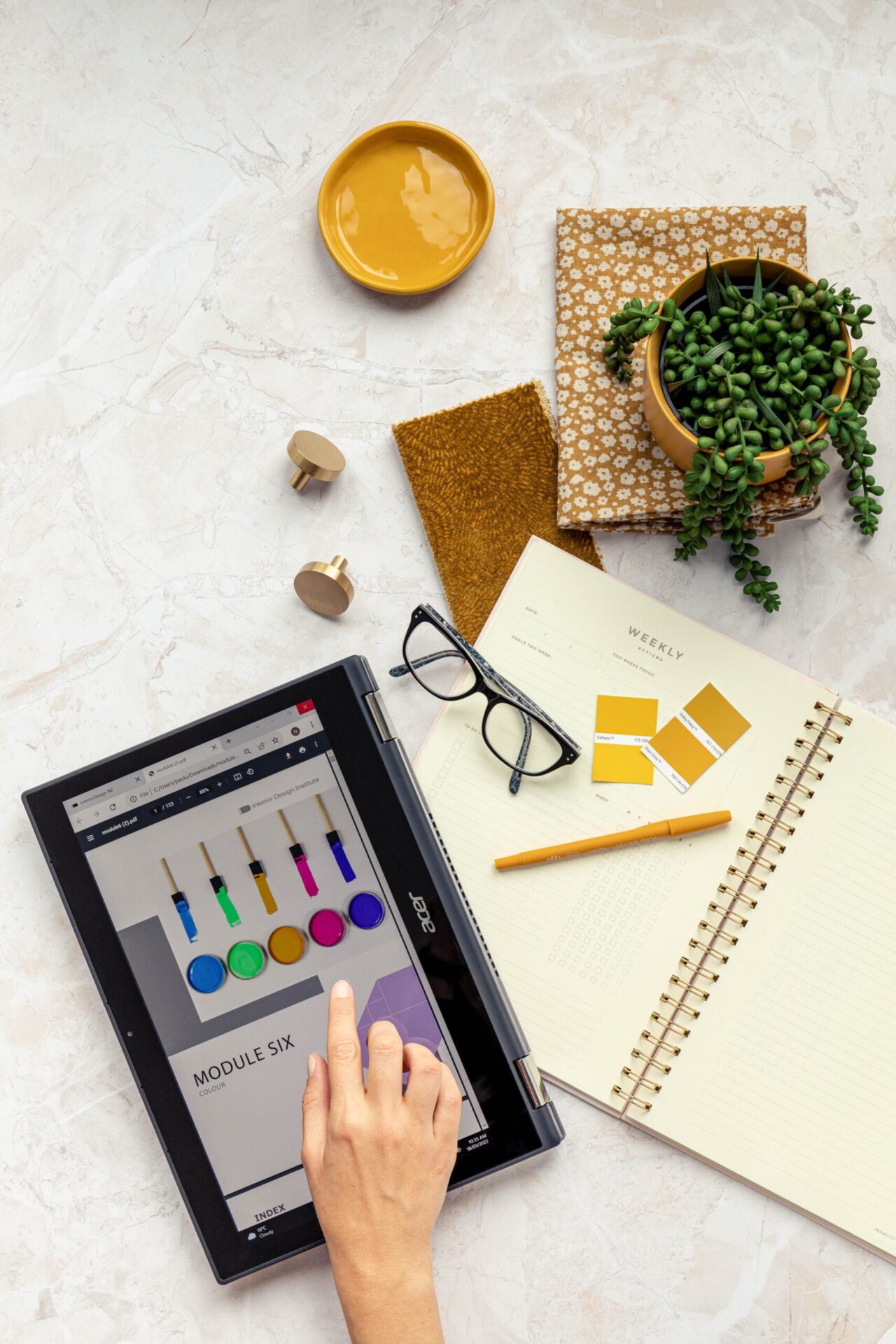
Become a Professional Interior Designer
Ready to unleash your creativity and transform spaces? Enroll in The Interior Design Institute’s course today and start your journey to becoming a professional interior designer.
Specializations Within Interior Design
Interior design is a vast field, brimming with opportunities to carve out a niche that resonates with one’s passion and expertise. While the core principles remain consistent, each specialization presents its unique set of challenges, considerations, and rewards. Let’s explore the various types of interior design that one can venture into.
Residential Interior Design
The heart of every home beats with the rhythm of its design. Residential interior designers craft spaces that echo the personalities, dreams, and needs of homeowners. From cozy apartments to sprawling mansions, they transform houses into homes, creating sanctuaries of comfort and style.
Commercial Interior Design
Stepping beyond personal spaces, commercial interior designers shape the environments where businesses thrive. Whether it’s the sleek ambiance of a high-end restaurant, the dynamic vibe of a retail store, or the professional aura of an office, these designers ensure that spaces not only look good but also enhance functionality and brand identity.
Hospitality Interior Design
Imagine the allure of a luxury hotel suite or the rustic charm of a countryside inn. Hospitality designers craft experiences. From hotels to bars and nightclubs, they weave stories that ensure guests not only enjoy their stay but also carry memories that last a lifetime.
Healthcare Interior Design
Beyond aesthetics, healthcare designers prioritize safety, accessibility, and well-being. Crafting spaces for hospitals, clinics, and medical offices, they ensure environments promote healing, cater to specific medical needs, and comply with stringent regulations.
Institutional Interior Design
Educational institutions, government buildings, and other public spaces fall under this umbrella. Designers in this niche focus on creating environments that foster learning, enhance productivity, and respect the unique needs of these establishments.
Sustainable Interior Design
With the world leaning towards sustainability, this specialization is more relevant than ever. Sustainable designers champion green building practices, energy efficiency, and eco-friendly materials, ensuring spaces are not only beautiful but also kind to our planet.
Historic Preservation and Restoration
History whispers through the walls of ancient buildings. Designers specializing in preservation and restoration ensure that these whispers don’t fade away. They meticulously restore historical structures, preserving their essence while infusing modern conveniences.
Each specialization comes with its set of design challenges, regulations, and unique considerations. From understanding niche markets to navigating building codes and permits, interior designers must wear many hats. But, regardless of the specialization, the goal remains the same: crafting spaces that resonate, inspire, and transform.

Tips for Hiring an Interior Designer
Embarking on a design project, whether it’s revamping a single room or an entire home, is an exciting endeavor. But to ensure your vision comes to life just as you’ve imagined, it’s crucial to find an interior designer who aligns with your aspirations and expectations. Here are some essential tips to guide you in making an informed decision:
Define Your Style and Budget
Before diving into the sea of potential designers, take a moment to reflect on your personal style. Are you drawn to contemporary minimalism or the timeless charm of vintage decor? Equally important is setting a clear budget. Knowing your financial boundaries will help streamline your search and set clear expectations from the start.
Ask for Referrals and Check Online Reviews
Word of mouth remains a powerful tool. Ask friends, family, or colleagues for recommendations. Additionally, delve into online platforms to read reviews and testimonials. Real experiences from past clients can offer invaluable insights.
Verify Credentials and Experience
A designer’s portfolio is their storybook. Browse through their past projects to gauge their expertise and style. Additionally, ensure they have the necessary credentials, be it degrees or professional certifications. Experience often translates to a smoother design process and better results.
Discuss Communication and Collaboration
Open dialogue is the backbone of any successful project. During your initial chemistry meeting, gauge how well the designer listens to your needs and how they communicate their ideas. Discuss tools they might use, like project management software, to keep you in the loop.
Review Contracts and Payment Terms
Before signing on the dotted line, thoroughly review the contract. Understand the payment terms, be aware of potential change orders, and clarify any ambiguities. A clear contract minimizes future misunderstandings.
Ensure a Good Fit for Your Project
Every design project is unique, and so is every designer. Beyond their style and expertise, trust your instincts. Do you feel a connection? Can you envision collaborating with them for the duration of your project? Remember, it’s not just about aesthetics; it’s about building a relationship.
Finding the right interior designer can feel overwhelming, but with the right approach, it becomes an exciting step in your design journey. Keep an eye out for any red flags, prepare your interview questions, and always prioritize post-project follow-up. After all, your space is a reflection of you, and it deserves the perfect designer to bring your vision to life.
Conclusion
Interior design is more than just arranging furniture or selecting paint colors. It’s a symphony of art, science, and human connection, where spaces are transformed to resonate with those who inhabit them.
Recap of Interior Designer’s Role and Responsibilities
From understanding the intricate nuances of residential and commercial spaces to navigating the challenges of various specializations, an interior designer’s role is multifaceted. They are visionaries, planners, and executors, ensuring that every project is a harmonious blend of aesthetics and functionality. Their responsibilities span from initial consultations to final touches, always with an unwavering commitment to bringing a client’s vision to life.
Final Thoughts on Working with an Interior Designer
Embarking on a design journey with a professional ensures that your space not only looks stunning but also feels right. It’s about creating environments that tell stories, evoke emotions, and enhance daily life. Whether you’re renovating an old home, setting up a new office, or simply refreshing a room, the expertise of an interior designer can be invaluable. Their knowledge, coupled with your vision, results in spaces that truly reflect who you are.

